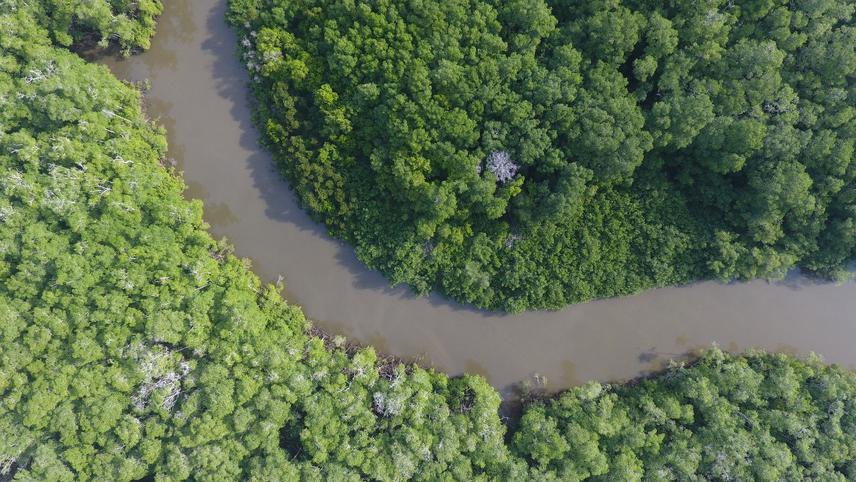Elpis J. Chávez
Other projects
8 May 2019
Trophic Ecology and Habitat Selection of Bull Shark (Carcharhinus leucas) at Two Costa Rican Estuarine Systems
The project aim is to provide information about the behavior and ecology of juvenile sharks in a tropical environment, as well as to promote the conservation of sharks in the area through educational actions.

Aerial view of Coyote estuary. © Edna de la llata
In Costa Rica the limited information on the biology and ecology of many species of sharks has made it difficult to determine the tolerance of their populations to detrimental human activities and environmental changes. It is vital to improve the knowledge on the biological and ecological processes that take place in the aquatic environments, specially on the Pacific coast of Costa Rica where the fishing activity is very intense and possibly affects the populations of large predators like sharks. This is critical for the development of conservation strategies and policies that promote the health of shark populations.
Bull sharks are the main apex predator in the coastal habitats where they live. They form an important part of the balance of these aquatic ecosystems. Bull sharks spend part of their lives in estuaries and river mouths. It has been documented that pregnant females migrate to estuaries and mouths of rivers to give birth; also, neonates and juveniles can remain there for some time after they are born. However, the reason why sharks select these habitats is unknown. In this sense, it is important to asses how some abiotic factors (such as salinity, temperature and turbidity) may influence the presence, movements and habitat selection of juveniles of bull sharks in freshwater habitats like the Coyote river.
The purpose of this project is to determine the local movements and habitat selection by juvenile bull sharks through the use of acoustic telemetry. Understanding the relationship between the movements and the distribution of juvenile’s sharks with the environmental factors will help to predict how sharks react to the modification of their habitat by human activity and to changes in environmental conditions caused by climate change and other factors.
The growing interest for sharks in recent years represents a great opportunity for using this emblematic species to foster the conservation of marine ecosystems and the protection of other sympatric species. This project will also improve the knowledge of the local communities about marine environments and the importance of sharks in these ecosystems. Increasing the public’s knowledge about sharks can potentially change their perspectives about them and, hopefully, turn the local communities more supportive about sharks and marine ecosystem conservation.